Discover 8 hidden attractions, cool sights, and unusual things to do in Valley City (United States). Don't miss out on these must-see attractions: Medicine Wheel Park, All Saints Episcopal Church, and West Park Bridge. Also, be sure to include Valley City Municipal Auditorium in your itinerary.
Below, you can find the list of the most amazing places you should visit in Valley City (North Dakota).
Table of Contents
Medicine Wheel Park
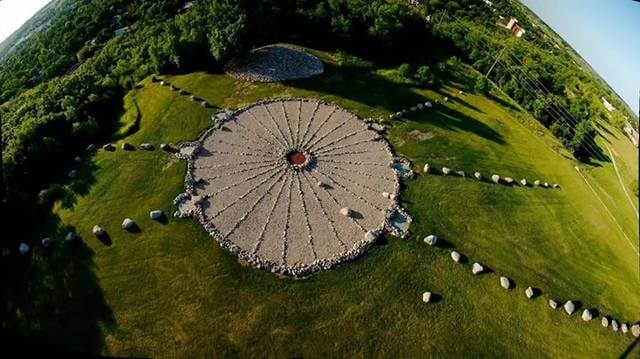
Top attraction, Relax in park, Park
Address: 101 College St SW, 58072-4024 Valley City
All Saints Episcopal Church
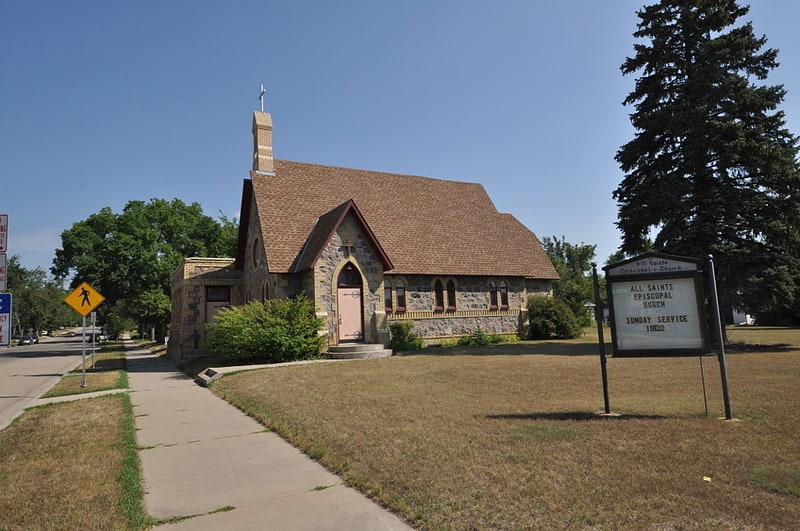
Church building in Valley City, North Dakota. All Saints' Episcopal Church built in 1881 is a historic Episcopal church building located in Valley City, Barnes County, North Dakota. Designed in the Late Gothic Revival style of architecture by an unknown architect, it was built of local fieldstone with concrete mortar and a wooden shake roof. It is noted as the "first stone Episcopal church in North Dakota." On December 3, 1992, it was added to the National Register of Historic Places as part of the Episcopal Churches of North Dakota Multiple Property Submission.
All Saints is still a small but active parish in the Episcopal Diocese of North Dakota.[1]
West Park Bridge
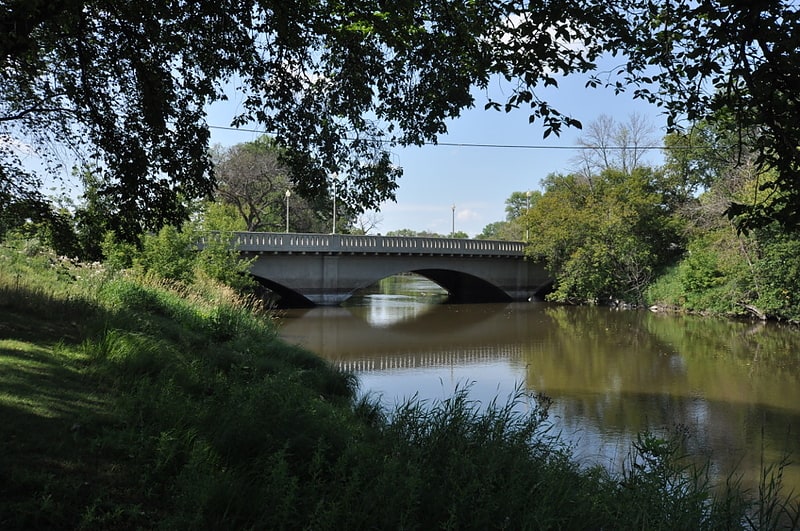
Bridge in Valley City, North Dakota. The West Park Bridge across the Sheyenne River in Valley City, North Dakota is a concrete false arch structure that was built in 2007. Together with the corresponding East Park Bridge, it brings Valley City's 4th Street across an oxbow of the Sheyenne River. The bridge is a sympathetic replacement for a historic bridge, built in 1924, that was listed on the National Register of Historic Places in 1997.
The 1924 bridge was deemed significant as a good example of "early twentieth-century bridge design and construction philosophies in urban North Dakota", including having design emphasis on visual detail, and for its "aesthetic merit", relating to its unusual use of the false arch girder design and to its railings and lamps.[2]
Valley City Municipal Auditorium
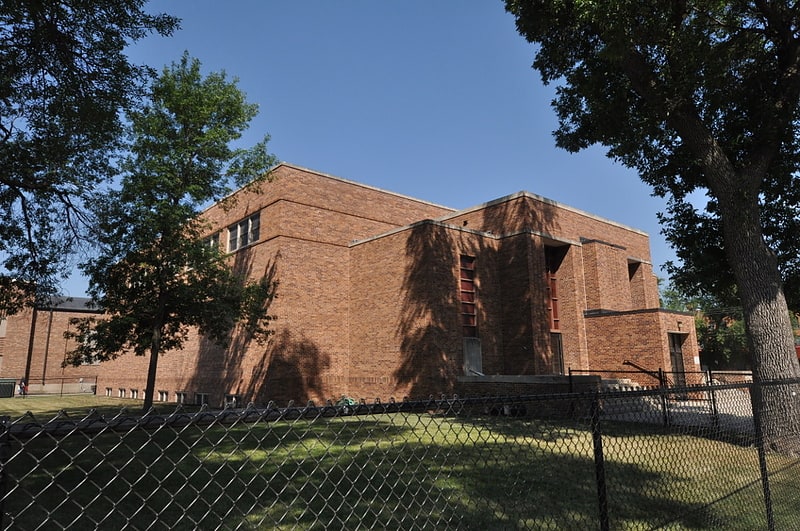
Auditorium in Valley City, North Dakota. The Valley City Municipal Auditorium in Valley City, North Dakota was built in 1936. It includes Modern Movement architecture, Stripped Classicism, and other architecture. It was listed on the National Register of Historic Places in 2008.
It was deemed significant for its architecture but primarily for its historic role in the community. The building has enabled the city to be host, since 1938, of the North Dakota Winter Show, and it has hosted many events. One memorable event was Peggy Lee performing with the Dave Barbour Orchestra in shows during March 6–9, 1950.[3]
Barnes County Courthouse
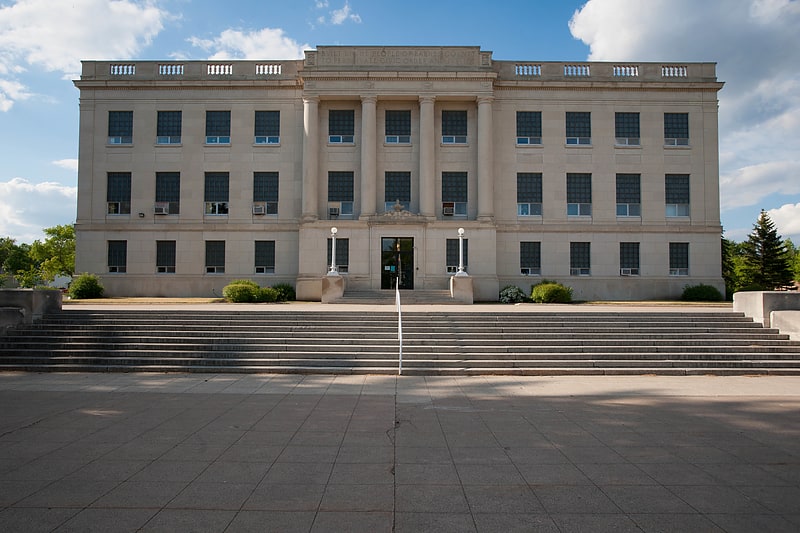
Building in Valley City, North Dakota. The Barnes County Courthouse in Valley City, North Dakota was built in 1925. "It is one of three distinctive county buildings in North Dakota which were designed by the Minneapolis, Minnesota, firm Toltz, King, and Day."
It was listed on the National Register of Historic Places in 1985.
The courthouse has Doric columns. On the frieze is inscribed: "BUILT FOR THE PEOPLE OF BARNES COUNTY TO PERPETUATE ORDER AND JUSTICE".[4]
Rudolf Hotel
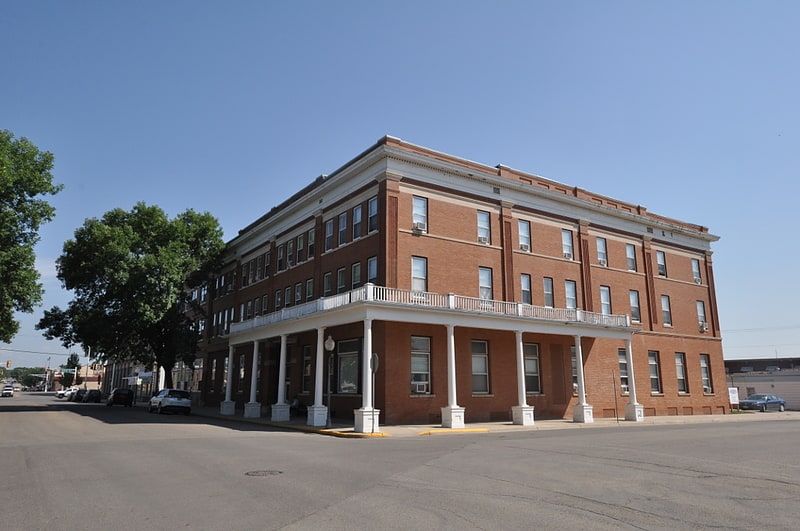
The Rudolf Hotel in Valley City, North Dakota is a three-story hotel building that was built in 1907. It was designed by John W. Ross in Classical Revival style. It was listed on the National Register of Historic Places in 1983.
Its significance recognized in the listing was for its association with Rudolph Giselius (1872-1944), for its example of work by North Dakota architect John W. Ross (1848–1914), for it being the oldest hotel in Valley City, and for its role in the local business and social community through the years. At the listing date in 1983, it had been vacant since 1977.
Its basement was site of Kiwanis Club meetings, and the first meeting of the North Dakota Aberdeen-Angus Breeders Association (in 1942).
It has since been converted to senior-living apartments, named Rudolf Square.[5]
Valley City Post Office
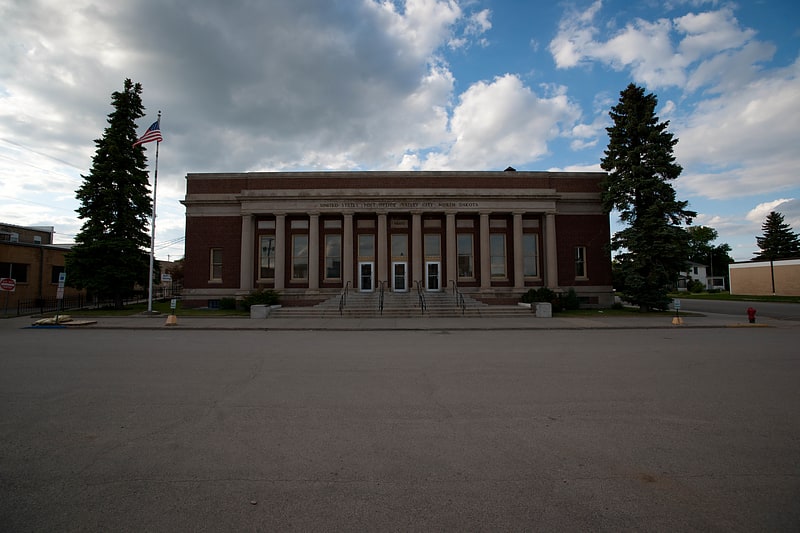
Post office in Valley City, North Dakota. The Valley City Post Office, in Valley City, North Dakota, was designed in 1915 and built during 1916–17. It was listed on the National Register of Historic Places in 1989 as U.S. Post Office-Valley City.
Its Classical Revival design is credited to the Office of the Supervising Architect under James A. Wetmore, and designed "in the spirit" of James Knox Taylor. It was built when post office designs were just beginning to be standardized, but shows individuality and does not follow any of the standardized plans that were adopted in 1915 at the national level. In fact, according to its NRHP nomination, it "was one of the last designs of its kind, and harks back to an earlier era when federal buildings were monolithic, imposing, costly, and built according to Beaux Arts principles of massing." It was described in a local newspaper account in 1916 as "'much more pretentious than most of the federal buildings that are being erected throughout the west when the size of the cities are taken into consideration'".[6]
Valley City Barnes County Public Library
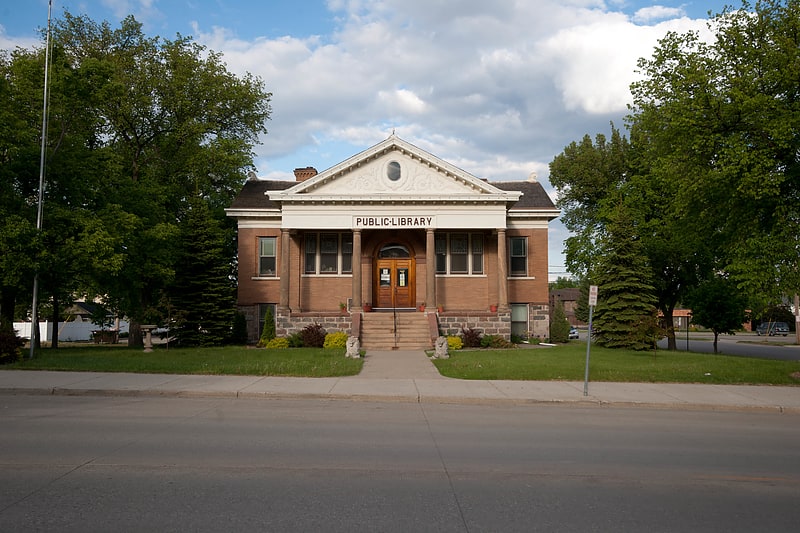
The Valley City Barnes County Public Library, also known as Valley City Public Library or the Valley City Carnegie Library, in Valley City, North Dakota is a Carnegie library that was built in 1903. It was listed on the National Register of Historic Places in 1979.
It was deemed significant as one of three libraries designed by Fargo architect William C. Albrant and one of only three relatively unaltered Carnegie libraries surviving in North Dakota.[7]